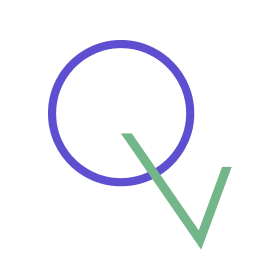VERA: Participatory science platform
Tackling societal challenges together
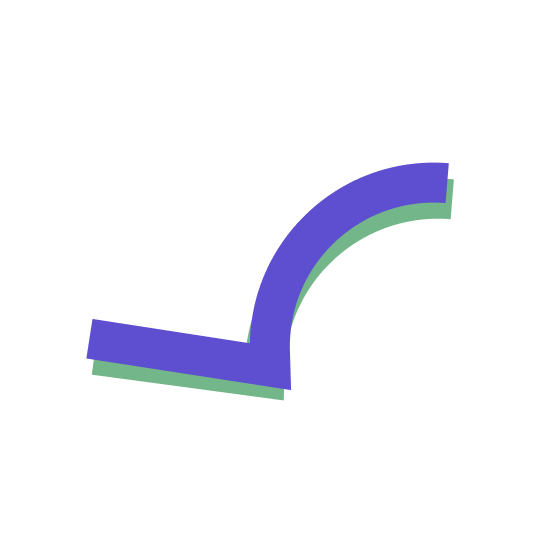
Activities
Interviews, workshops, IA, wireframing, user tests, UI, design system
Role
Lead UX Researcher & Designer
Scope
Conduct research and deliver a collaborative platform for participatory research within the Social Sciences and Humanities (SSH)
Summary
In this wider European funded project (COESO), I came on board early in its development to lead the UX research phase for VERA (Virtual Ecosystem for Research Activation) and work alongside a senior UX designer, however my responsibilities quickly expanded to cover principal UX design duties, data modelling as well as UI and design system work. The goal was to deliver a space for participatory research projects to collaborate (a ”collaboratory”) on Social Sciences and Humanities (SSH) topics, discover potential team members and integrate tools. Through my work we uncovered gaps in the current landscape: users needed a promotional platform dedicated to this type of research. This insight translated into features like project showcases in the VERA hub, a VERA widget and a diary where collaborators can quickly share updates about their project with other collaborators and the world. Over the course of 2 years, I helped bring this unique platform to life, using every skill in my own design toolbox. In December 2022, a beta version of the platform went live and is already garnering a lot of attention.
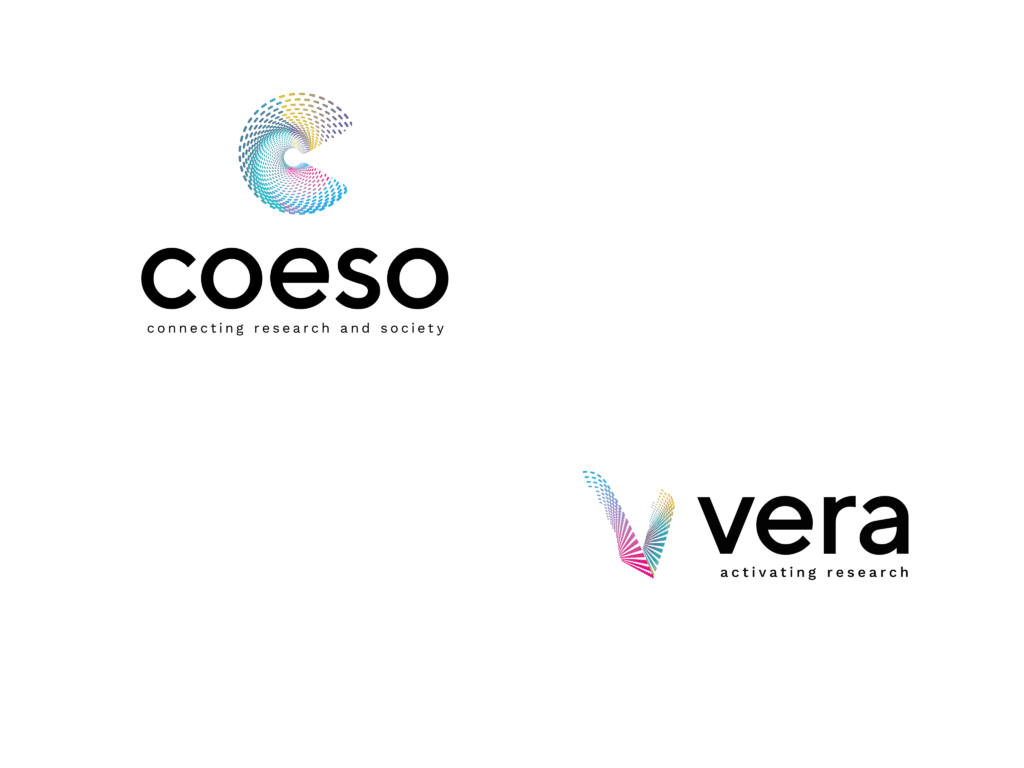
Backstory
To understand this project I first have to introduce a world of important research that’s on the rise: citizen science. This type of science powered by “regular” people can come in many shapes and sizes: from crowdsourced data to designing methodologies together with academics. Our target was to empower people practicing the latter, more extreme version, known as participatory research.
Research
Co-designing a platform via continuous user-centered research and design
To gain some contextual understanding I immersed myself within the topic by conducting a benchmark and a netnography on citizen science forums and Facebook group. This preliminary analysis better informed my research questions for user interviews. I handled recruiting, talking to users within the COESO project and using the forums identified earlier.
In the end I delivered a very in-depth analysis of 21 interviews with researchers, artists, journalists, policymakers and citizens, triangulating the insights with the results of the netnography. In terms of deliverables, the insights were translated into 5 personas with respective scenarios.
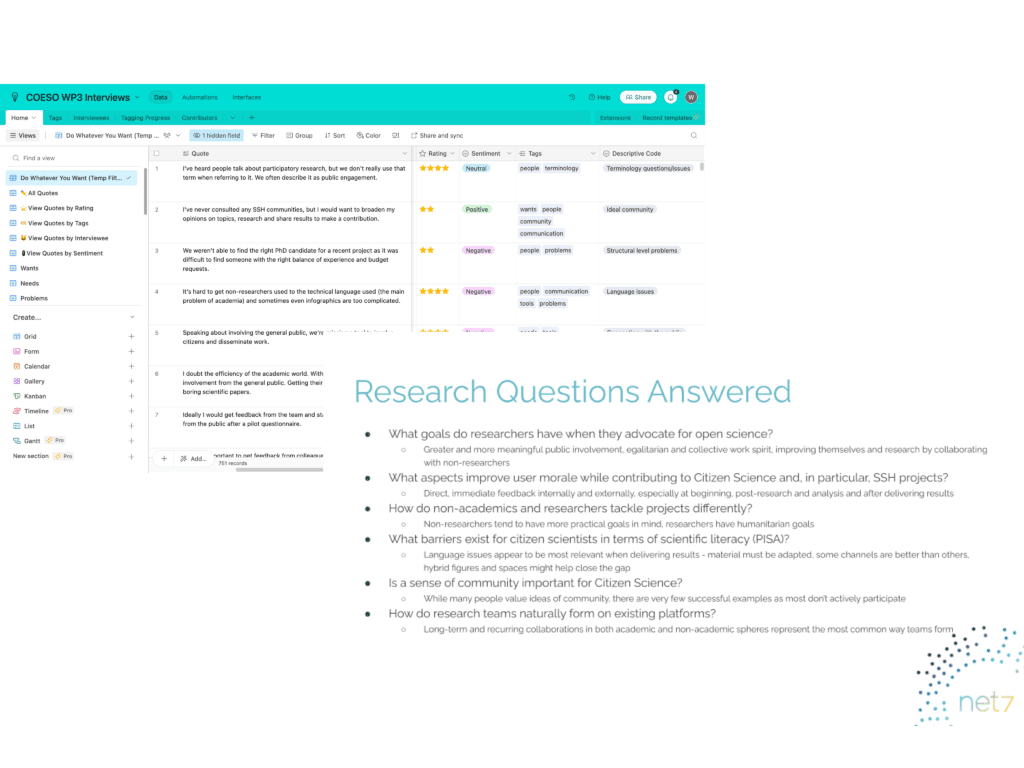
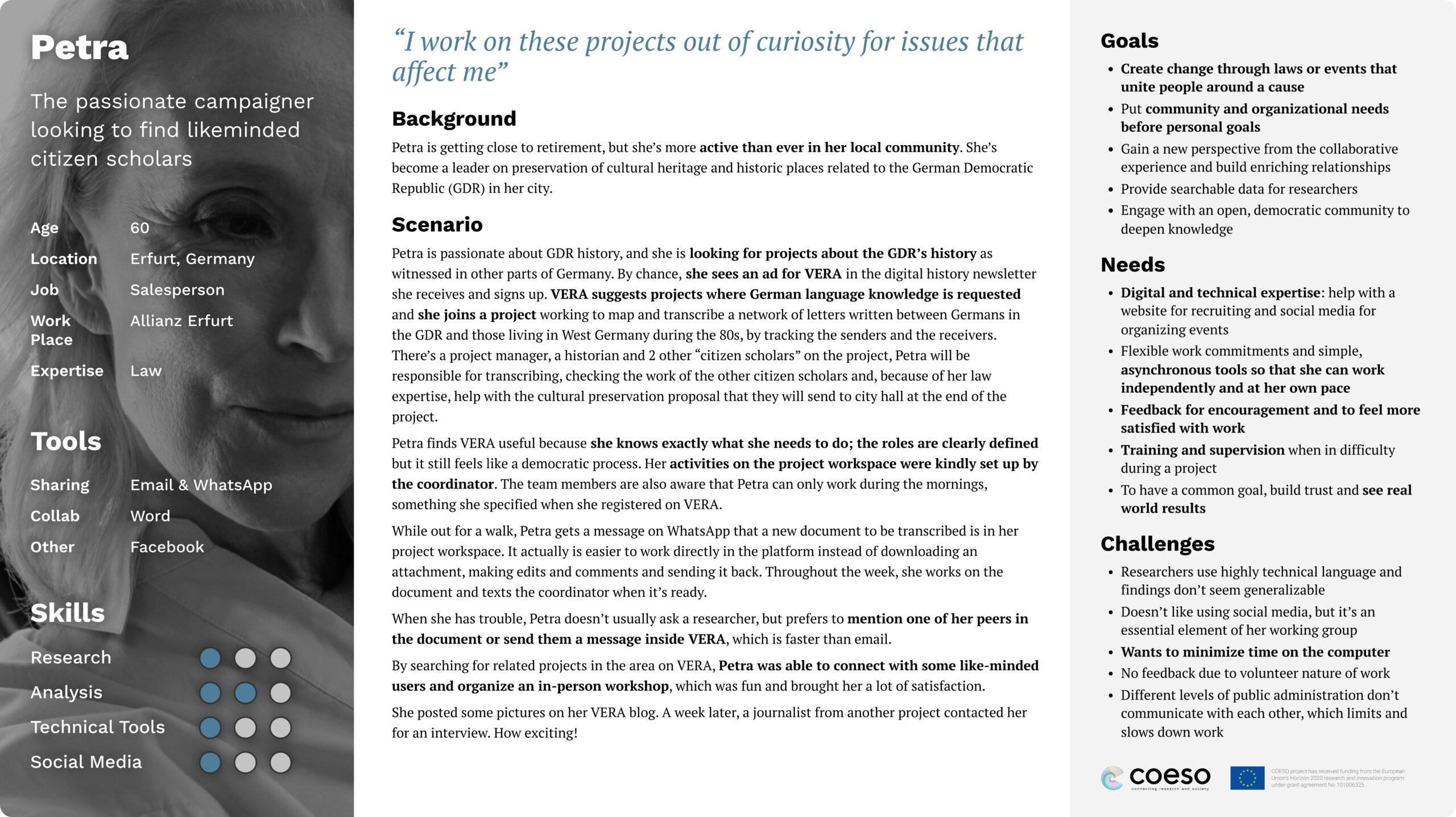
Workshopping user workflows and early wireframes
The user research did not end there, extending another 6 months in which we conducted 3 co-design workshops covering different topics that emerged as essential to the success of the platform.
The first workshop covered services and tools used during each phase of citizen science projects to understand what categories of tools would be most useful to integrate for VERA. The second focused on the language and content design, which helped us better understand the terminology and keywords used by various roles. It also served as a semi-user test to get feedback on some of the features and copy for our earliest wireframes. The final workshop was a deep dive into the project tasks so that we could test our ideas for guiding users through project setup and management, and ended up providing a wealth of content ideas for tips to be implemented into the platform.
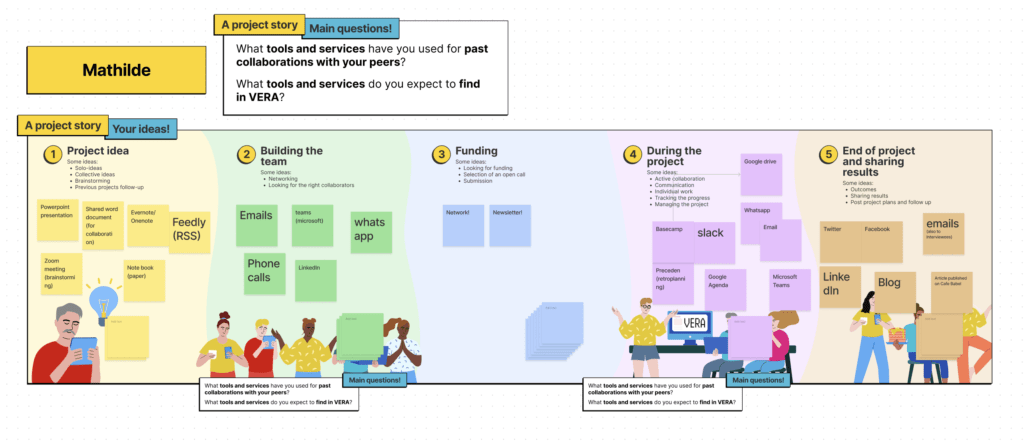
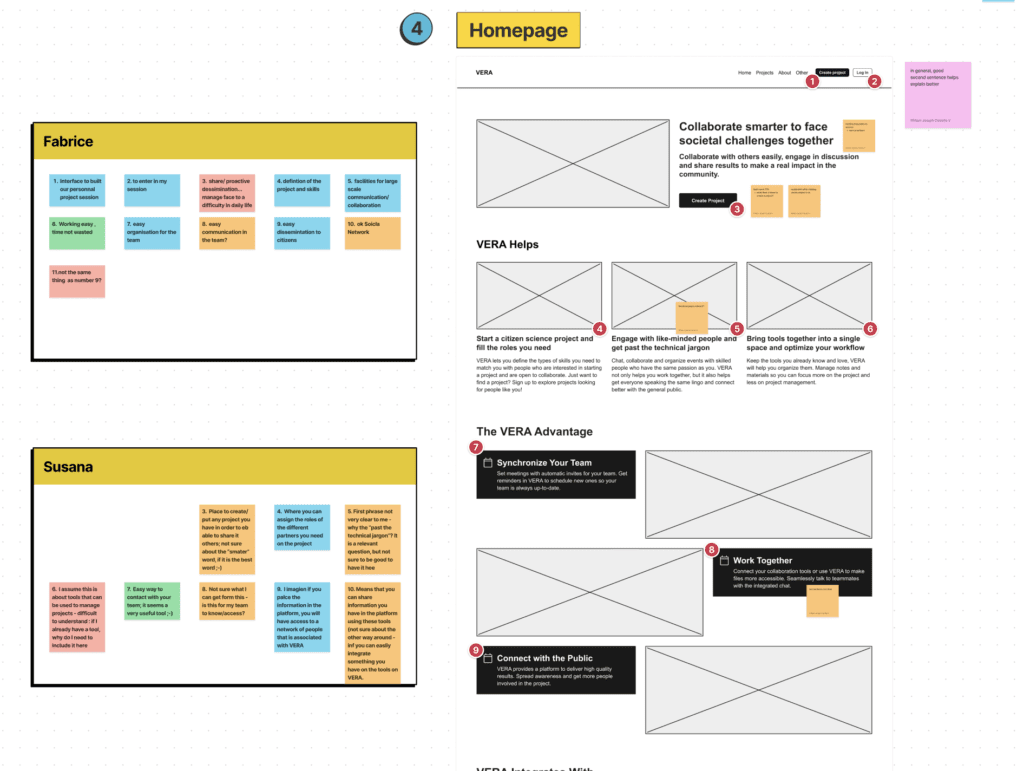
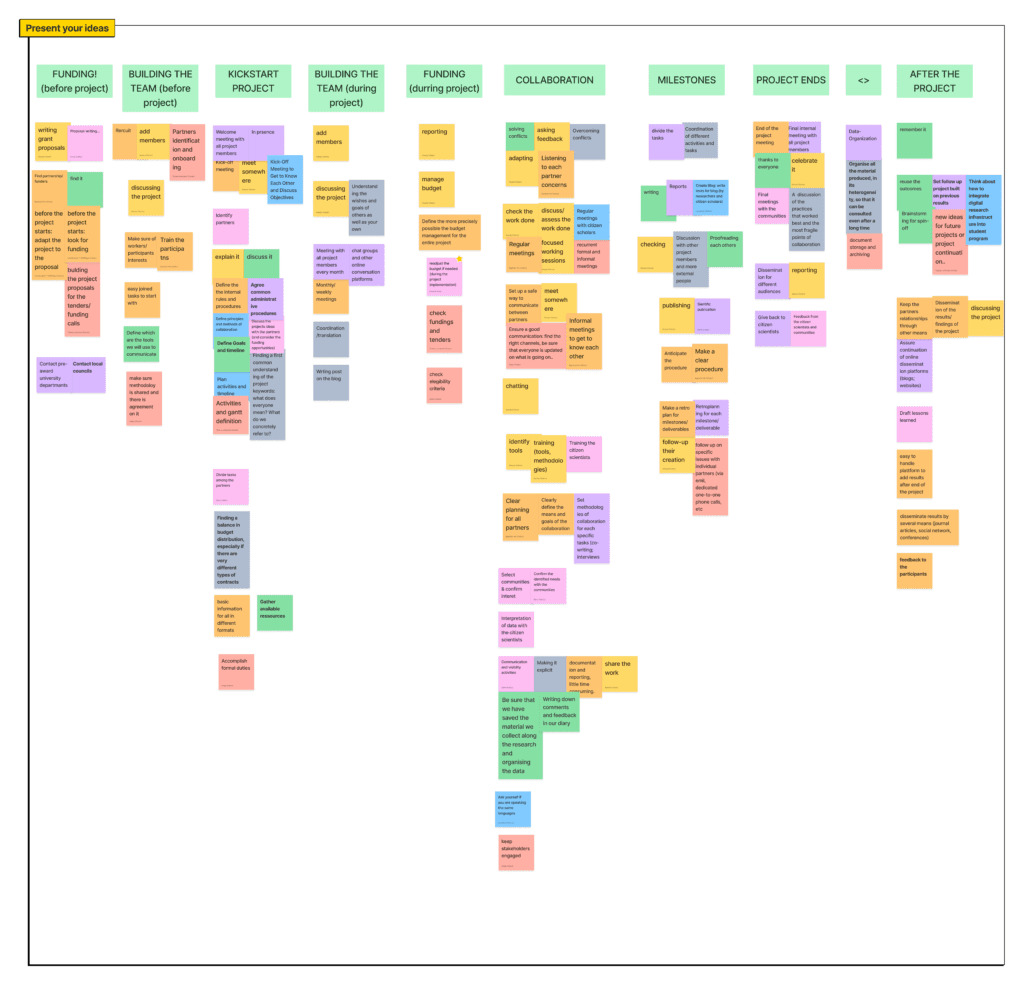
Design
UX design and dev handoff
In parallel to the workshops, the design phase kicked off immediately after the user interview insights and deliverables were presented. Initially working with a senior UX designer, we laid the foundation of the platform so that later I could take over as the UX lead.
The UX design process was inherently iterative with features outlined in user stories and translated to wireframes and user flows. Beginning with the core features and balancing with what emerged from the research and the initial project requirements, alongside another UX/UI designer I coordinated the hand off each piece of the UI to the dev team.
With an alpha version online, we were then able to test these core features with 4 users of varying technical ability. I analyzed the tests to deliver a comprehensive design indications document which was used over the course of the following monthly sprints to fix bugs, make interface corrections and improve features.

User testing to align with users and catch issues early
With an alpha version online, we were then able to test these core features with 4 users of varying technical ability. I analyzed the tests to deliver a comprehensive design indications document which was used over the course of the following monthly sprints to fix bugs, make interface corrections and improve features.
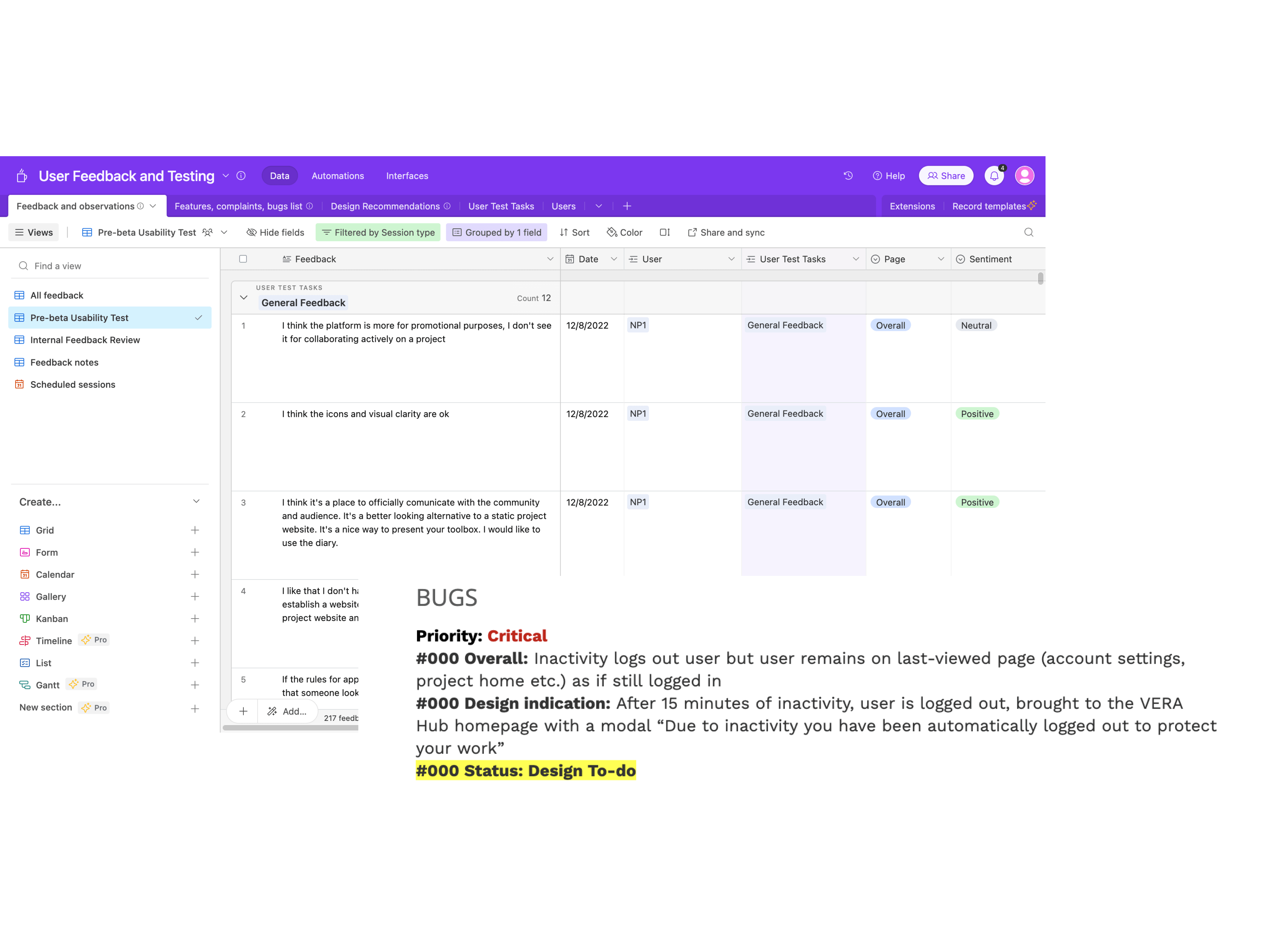
Using my full set of design skills to deliver even smarter features
On top of the UX design, creating a design system together with a UX/UI designer proved immensely helpful to standardize components for the development team and make them easily accessible and modifiable.
Defining the data model for the platform was also my responsibility which detailed all of the metadata, settings and fields across the platform.
A key requirement of the platform involved a matchmaking service to suggest potential collaborators to projects. Here I defined the model and UX elements to deliver a smart system that takes into account the fact that initially there will be few users on the platform to draw from, but ultimately could become more refined as the platform grows.
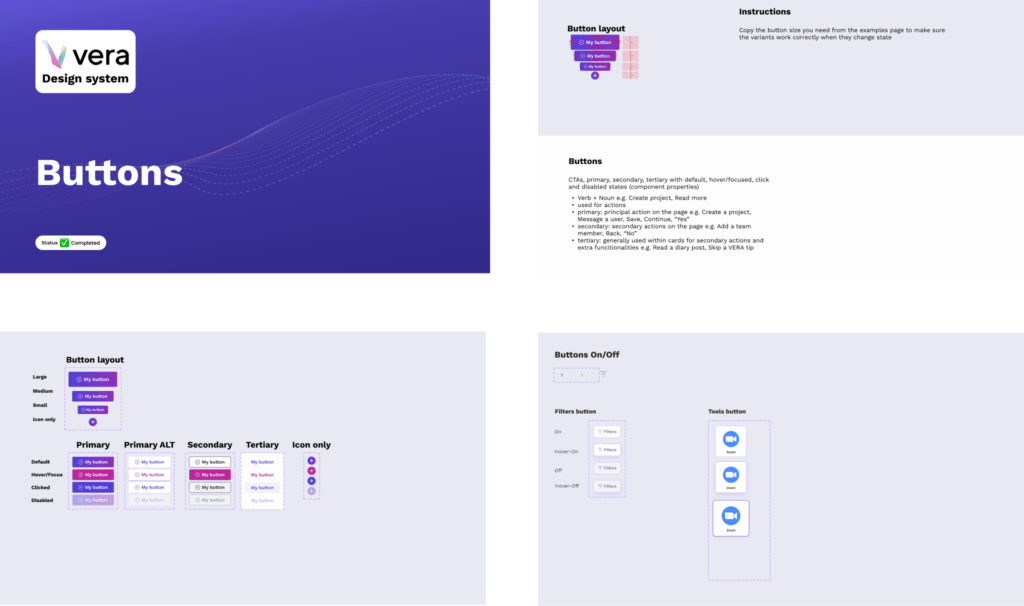
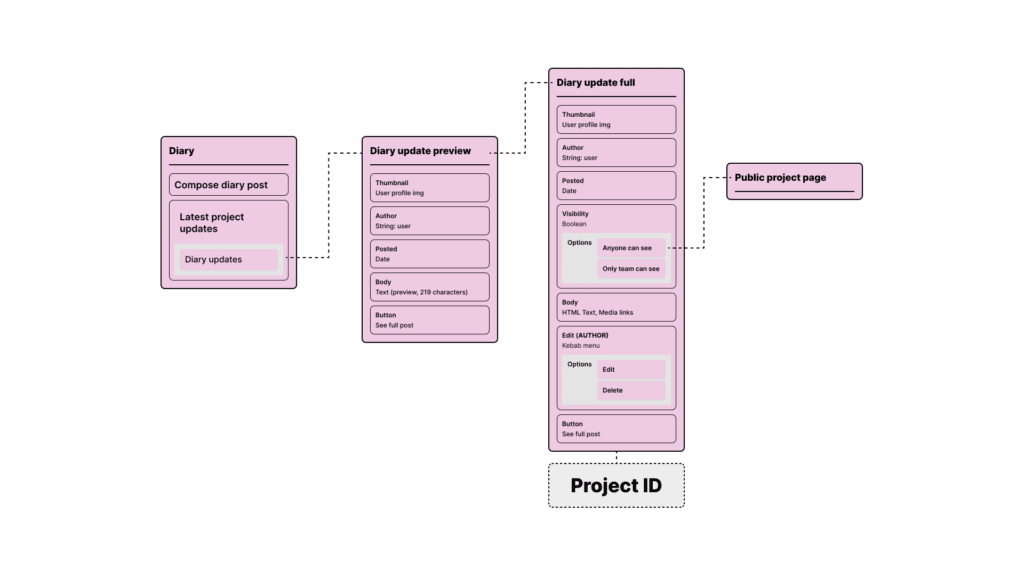
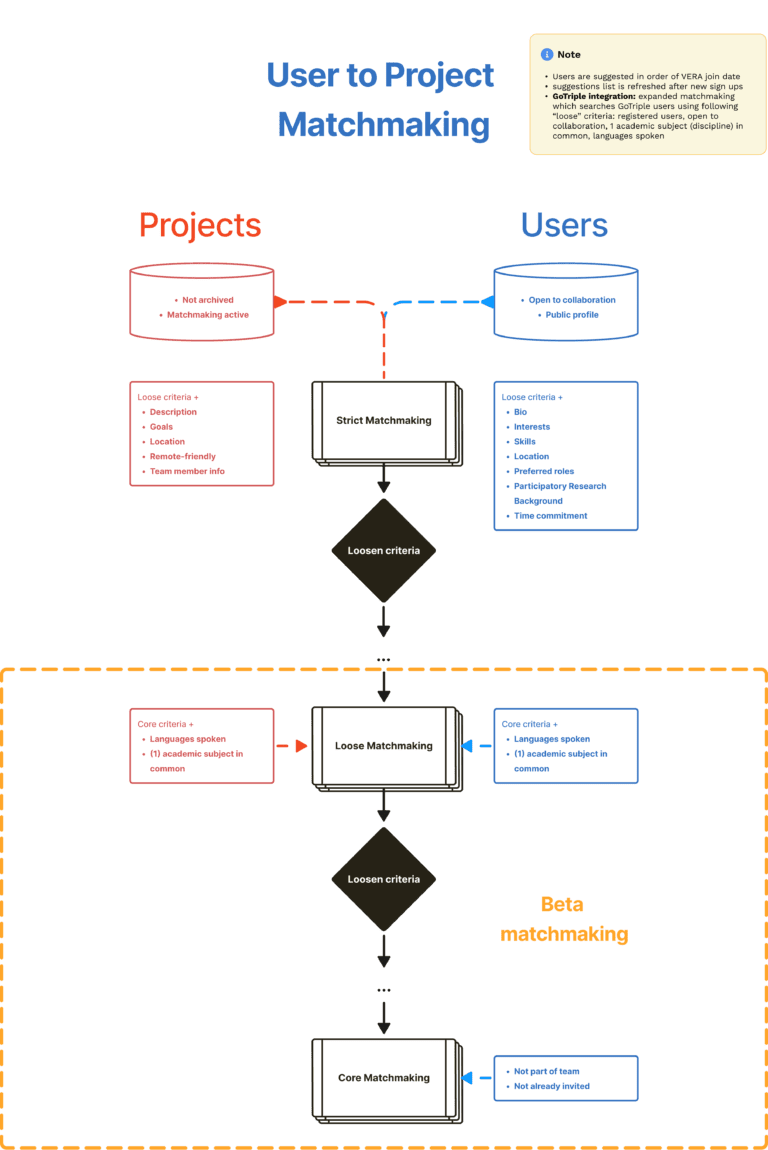
Results
A buzzworthy platform that helps discover, collaborate on and promote projects
After 2 years of consistent effort and activities ranging from benchmarking to tech demos, the platform is in beta and nearing its official release. The VERA Hub at the center of the platform is already garnering excitement from the citizen science community as a place to promote their projects and discover new ones. I have helped coordinate over 100 fixes and the implementation of new features like the matchmaking system, funding service and a VERA widget which allows platform and project promotion on external websites. It’s far from perfect, however: the diary feature has emerged as a fan favorite and should be expanded to allow for true micro-blogging. In terms of inclusivity, I also believe a low-data/offline version of the core features of the platform is a must to allow for citizen scientists around the world to fully collaborate on projects..
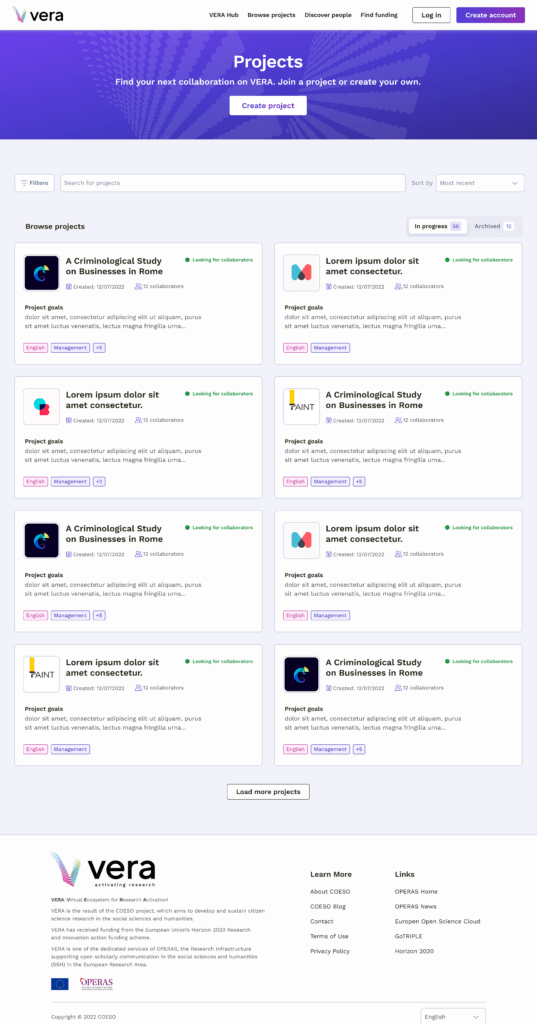
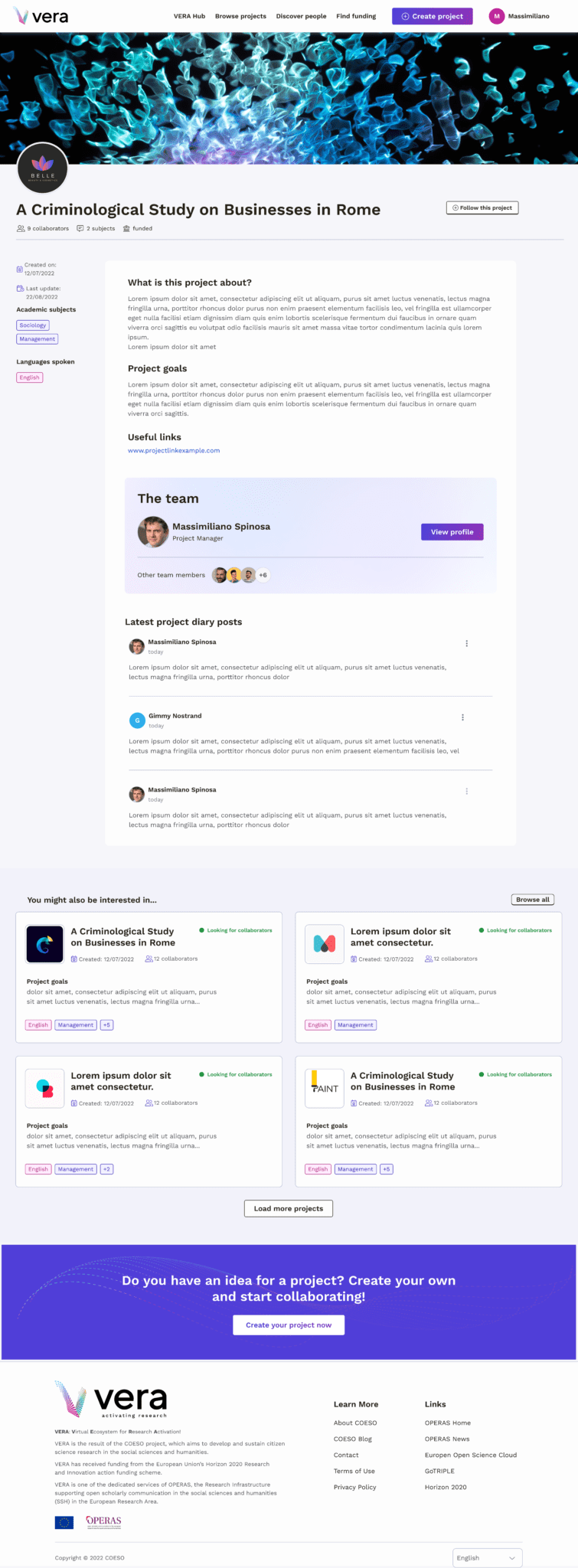

Takeaways
Keep your eyes on the prize
- Getting a bird’s eye view from a product owner’s perspective is essential to avoid issues requiring improvisation.
- On the other hand, a comprehensive solution means planning for edge cases, empty states, and deep-diving into the logic of each system
- It’s much harder to do something the right way: delivering one simple but robust feature is better than 10 mediocre ones
